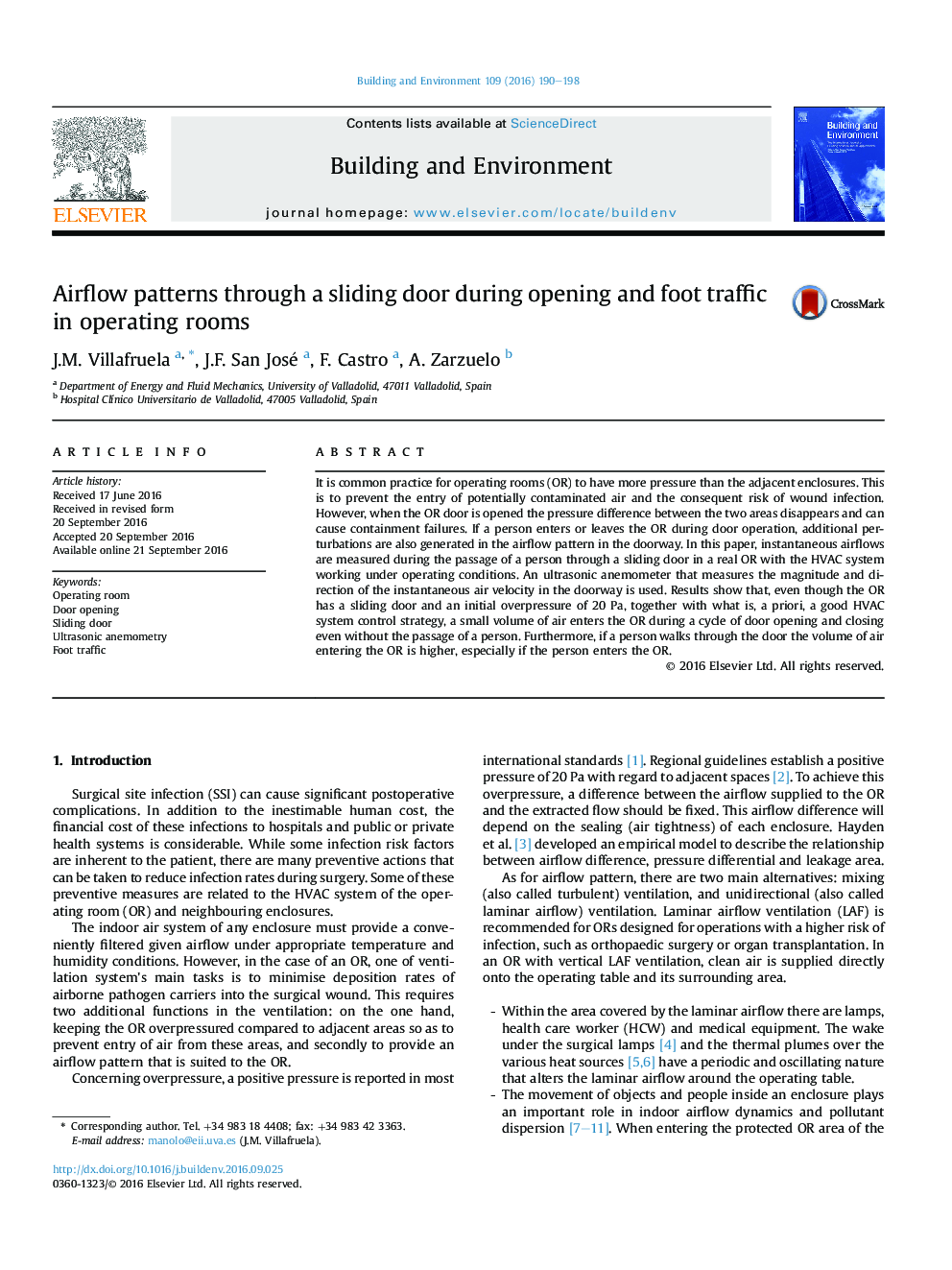| Article ID | Journal | Published Year | Pages | File Type |
|---|---|---|---|---|
| 4917546 | Building and Environment | 2016 | 9 Pages |
Abstract
It is common practice for operating rooms (OR) to have more pressure than the adjacent enclosures. This is to prevent the entry of potentially contaminated air and the consequent risk of wound infection. However, when the OR door is opened the pressure difference between the two areas disappears and can cause containment failures. If a person enters or leaves the OR during door operation, additional perturbations are also generated in the airflow pattern in the doorway. In this paper, instantaneous airflows are measured during the passage of a person through a sliding door in a real OR with the HVAC system working under operating conditions. An ultrasonic anemometer that measures the magnitude and direction of the instantaneous air velocity in the doorway is used. Results show that, even though the OR has a sliding door and an initial overpressure of 20Â Pa, together with what is, a priori, a good HVAC system control strategy, a small volume of air enters the OR during a cycle of door opening and closing even without the passage of a person. Furthermore, if a person walks through the door the volume of air entering the OR is higher, especially if the person enters the OR.
Related Topics
Physical Sciences and Engineering
Energy
Renewable Energy, Sustainability and the Environment
Authors
J.M. Villafruela, J.F. San José, F. Castro, A. Zarzuelo,
